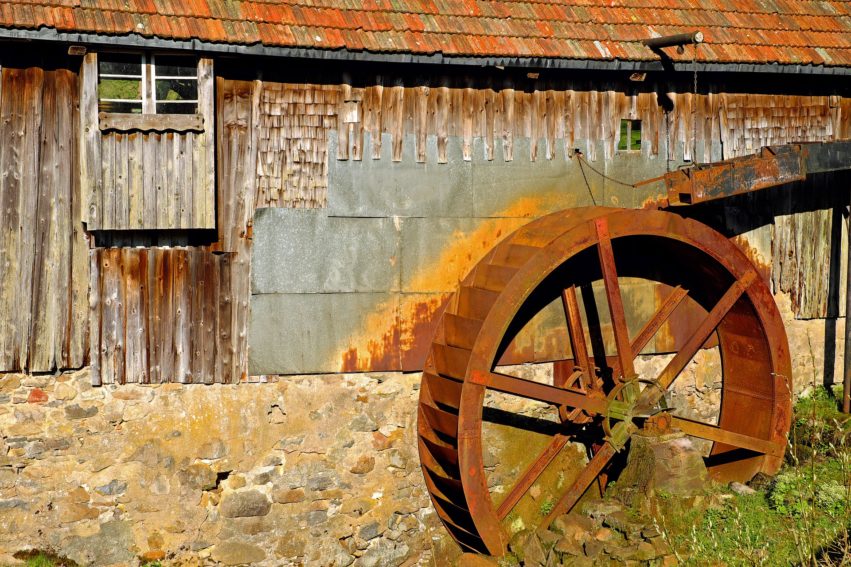
Tale of Two Cities
I walk every day. Once I offered a 10 minute talk about the benefits of walking to a business network meeting. Someone asked how they could find the time, as they would have to drive out to the country. Just leave the house, close the door and start walking, I said. Walking in the city counts as walking!
It’s easy to extol the benefits of walking: physical, mental, environmental (observing and protecting), social, spiritual … I add to that list: historical. Wandering around and observing, you can learn a lot about local history. Plaques and interpretation boards are very common everywhere in the UK. But looking at buildings, especially above street level, can tell you a lot. There is an emotional element for me because these are the streets my parents and grandparents walked. History helps me remember.
Think of an outline of a wineglass: bowl and stem. The River Don flows into Sheffield from the North West, bends north of the city centre and flows out towards the North East. The River Sheaf flows into the Don at the bottom of the wineglass. Sheffield gets its name from Sheaf.
There are actually 5 rivers in all. That’s why the locals say Sheffield’s built on seven hills (like Rome). You can follow them all, more or less and then you learn loads about the Industrial history of the city. They’re often culverted and if you walk through the culverts (there are videos on YouTube) you see the remains of ancient bridges, incorporated into the coverings. The Sheaf is hard to follow, although I’ve done it above ground. The Porter is more familiar. It flows into the Sheaf under platform 5 of the railway station.
Along the Porter you see many damns built to power water wheels that drove the grinding industry. As industry became independent of water, it clustered around the Sheaf, all the way into the city centre. Then it moved into the Lower Don Valley, in the North West of the city.
This is the best place for it because the prevailing wind is from the South East (hence the SE of the city is the wealthiest) and so blows air pollution out of the NW of the City. Water pollution in the Don flows in the same direction. Thus everyone in Sheffield is happy and we’re used to not listening to the residents of Rotherham on the receiving end of our waste.
You need to understand the geography to understand why the 20th century is a tale of two cities. You could argue it’s two cities all the time, the wealthiest parliamentary constituency in the country in the SE and some of the poorest parts in the North.
But that’s not what is usually meant. The city centre was blitzed during the war. Why Sheffield? It wasn’t the only city blitzed. It was targeted because the industry in the Lower Don Valley produced munitions. For some reason they failed to hit the industry but demolished the city centre.
My father’s grandmother, I think she was Grandmother Sissons, was an entrepreneur. She owned an hotel (or doss house) and a row of cottages on Whitham Road. This is where the University of Sheffield Richard Roberts Building is now. The end terrace was a scrap yard, on what’s now the University roundabout. Most of the cottages were inhabited by members of great-grandnother’s family. The scrap yard was owned by another family. My father played out with a little girl from that family.
War touched them in many ways. My sister did some research recently. It seems my father’s father, whom I never knew, fought in the First World War. She believes he was punished for cowardice or something, what today we would call post-traumatic stress disorder. She remembers my father talking about domestic abuse.
My father ran wild around the area, an area I know very well. He collected a shoe box full of shrapnel and later showed me railings with lumps blown out. The Rec had a great slope for sledging down to a football pitch. They put a barrage balloon there during the war. A friend of my father’s sledged down the slope, didn’t stop and ran into a wire at speed. It sliced through both his cheeks.
One night a bomb fell on the scrap yard and the family there were wiped out. It demolished the cottages but the inhabitants were in shelters. They survived because it was not a direct hit. This split the family.
When I was a kid in the 50s, I didn’t realise the building work was on bomb sites. I witnessed the rebuilding of the city centre. Mark Steel, a British comedian, visited Sheffield recently and he said the people of Sheffield woke up the morning after the blitz, looked at the mess and thought “I quite like the look of that”.
The second city included the T’oil int Ro-ad. The hole in the road made Sheffield the greatest shopping centre outside of London from the late 60s to the 80s. That’s gone now. It feels more like a tale of three cities these days. We’re still seeing buildings demolished to make way for a renewed city centre. I watched one going down just a few weeks ago. It’s as if the city has never found comfort after the war.
Trauma sometimes touches whole communities. Both my parents’ families remembered the blitz, lived through them, sometimes fearful, sometimes with laughter. And now as I walk around I see two, maybe three, cities and hear the footsteps of my ancestors. “Where the hell are we?”
Day 9/21 of my writing challenge. Every weekday, I publish a short piece of writing on my subject, solitude. The writings are based on a daily prompt from Megan Macedo, who leads the challenge. These are all first drafts with minimal revision. Please comment if you find these posts helpful. Previous: Workhouse. Next: Keep Off the Grass.